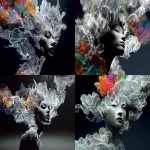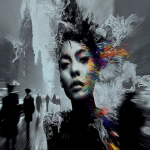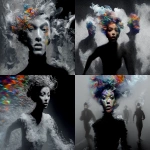Explore the Best AI Image Gallery
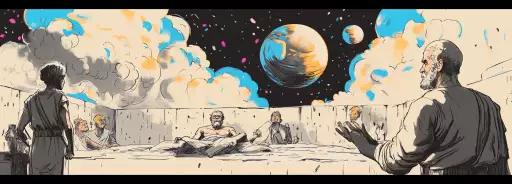
The Algorithmic Brush: Exploring AI Image Creation Tools
Artificial intelligence (AI) is rapidly transforming numerous industries, and the creative field is no exception. One particularly fascinating development is the emergence of AI image creation tools, capable of generating stunning visuals from text prompts or pre-existing images. These tools are revolutionizing the way we create and consume art, opening up exciting possibilities while also raising important ethical questions.
The Impact on the Creative Industry
AI image generation tools have the potential to profoundly impact the creative industry in both positive and negative ways:
- Democratization of Art Creation: AI tools can empower individuals without formal artistic training to create high-quality visuals, making art creation more accessible.
- Enhanced Efficiency: Designers and artists can leverage AI to rapidly generate multiple concepts, explore different styles, and streamline their workflow.
- New Artistic Expressions: AI algorithms can produce unique and unexpected visuals, pushing the boundaries of artistic expression and inspiring new creative directions.
However, these tools also present challenges:
- Job Displacement: There are concerns that AI-generated art could automate tasks currently performed by human artists, potentially leading to job losses.
- Copyright and Ownership: Questions arise regarding the ownership and copyright of AI-generated artwork, as the creative process involves both human input and algorithmic output.
Potential Uses Across Industries
AI image creation tools have a wide range of applications beyond the traditional art world:
- Marketing and Advertising: Generate eye-catching visuals for campaigns, social media content, and product presentations.
- Education and Training: Create interactive learning materials, simulations, and visualizations to enhance understanding.
- Healthcare: Assist in medical image analysis, generate anatomical models, and personalize patient care.
- Gaming and Entertainment: Design game environments, characters, and assets, bringing immersive experiences to life.
Ethical Considerations
The rapid advancement of AI image generation raises several ethical considerations:
- Bias and Representation: AI algorithms can perpetuate existing societal biases if trained on biased datasets, leading to the creation of stereotypical or discriminatory imagery.
- Authenticity and Manipulation: The ability to generate realistic fake images raises concerns about misinformation, deepfakes, and the erosion of trust in visual content.
- Transparency and Accountability: It is crucial to ensure transparency in how AI tools are developed and used, holding creators accountable for the ethical implications of their work.
Addressing these challenges requires a multi-faceted approach involving developers, policymakers, artists, and the public. Establishing ethical guidelines, promoting diversity in AI datasets, and fostering open dialogue are essential steps towards responsible innovation in this field.
Future Trends
The future of AI image creation tools holds immense promise:
- More Sophisticated Algorithms: Advancements in AI will lead to more powerful algorithms capable of generating even more realistic and creative visuals.
- Personalized Creativity: Tools will become increasingly tailored to individual user preferences, allowing for a more personalized and expressive creative experience.
- Integration with Other Technologies: AI image generation will seamlessly integrate with other technologies, such as virtual reality (VR) and augmented reality (AR), creating immersive and interactive experiences.
As AI technology continues to evolve, it is essential to embrace its potential while navigating the ethical complexities. By fostering collaboration, promoting responsible development, and encouraging critical dialogue, we can harness the power of AI to unlock new frontiers in creativity and innovation.
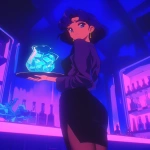








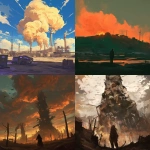


](https://images.ai-img.art/thumbnails/150/bd056a4718c27444e064198762f8dc8ffa1f74f1afd7dcda8d5cb8b142797d6e.webp)
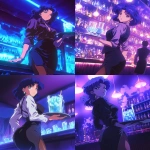
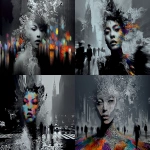


](https://images.ai-img.art/thumbnails/150/a3ed6513a6661aa3ee46e0c2924d1e8888854e91d8908de39db5590dc41f8d8f.webp)

](https://images.ai-img.art/thumbnails/150/847809c77ca9a73b68bc190e6efb06fec87157685a243730d5a66a403b0e6e10.webp)

](https://images.ai-img.art/thumbnails/150/7cf5a08238f29c821f52bb4f63db48af0b7f633ff3b9f7253074d78ced9ff6f6.webp)


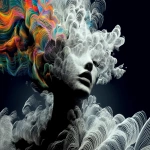

](https://images.ai-img.art/thumbnails/150/ff09e32d2be011c0dd785984c5c1e47839ce551a31da1bde242860b30df2aa30.webp)

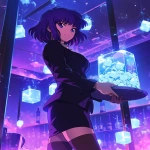

](https://images.ai-img.art/thumbnails/150/685ae68cfab93a7e59a71206867b060c45bd6fd3cd561c4fe60fca514b09c5f8.webp)
](https://images.ai-img.art/thumbnails/150/0ba0be922ab76af53f75ab90126ae2b18a600ee3b96941e8ab897a9f10594e5a.webp)


](https://images.ai-img.art/thumbnails/150/2ebdeb4f7db35100e5be5de9bc3e533a40d14e5feedefd7ffc586524a0f3ba8c.webp)





